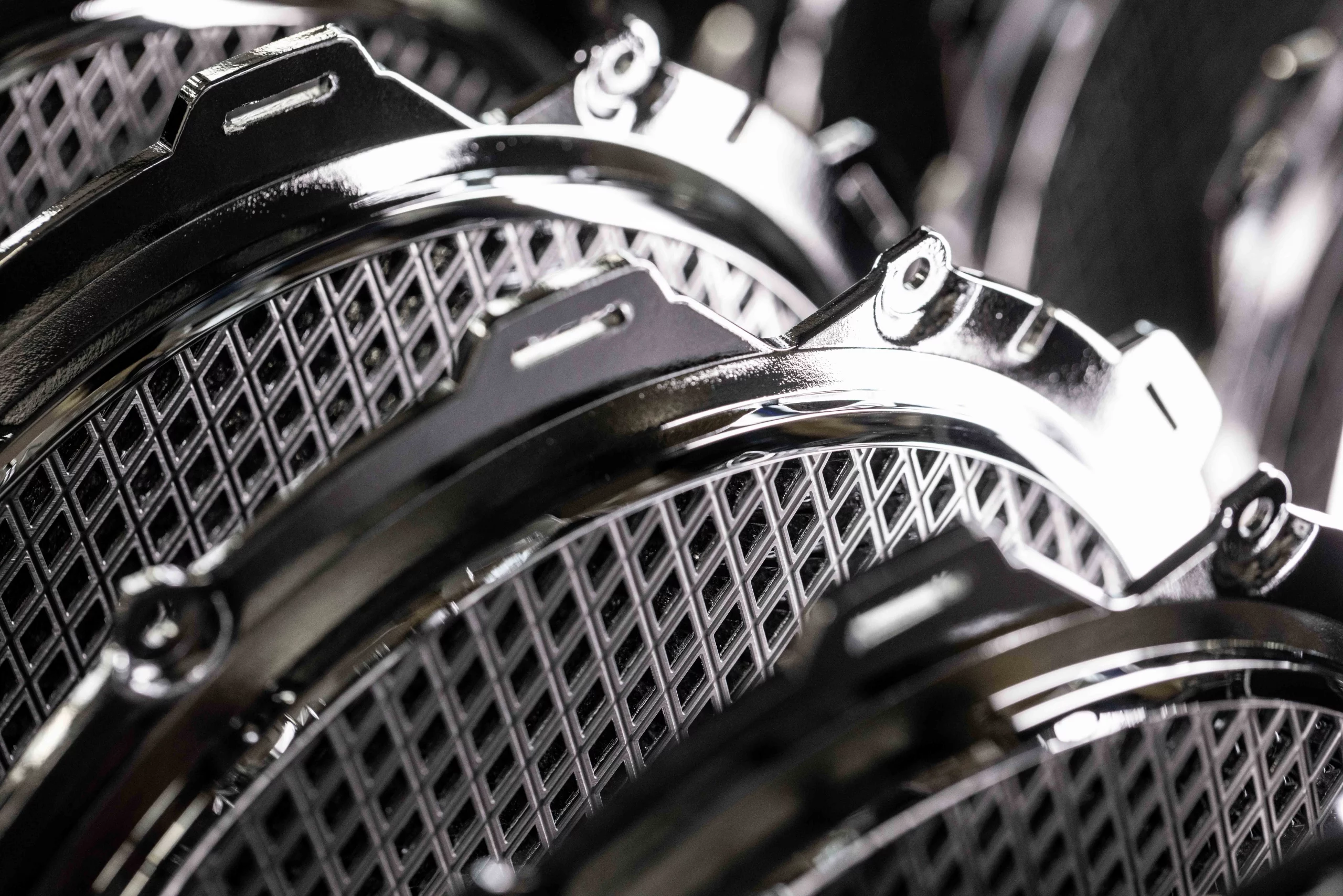
17 Apr Steeling the Spotlight: An Alternative to Aluminium for Automotive Interiors
When it comes to designing and developing automotive interior trim, choosing the right materials is critical.
For metal components, aluminium has long been the default solution for design engineers, but stainless steel is becoming an increasingly popular choice due to the myriad of benefits it has over its metallic cousin.
In this blog post, we will explore why stainless steel stands out as the superior choice over aluminium for automotive speaker grilles.
Durability and Strength
Although it has a higher density than aluminium, stainless steel’s corresponding strength prevents dents and deformities, providing long-lasting protection to the speakers housed beneath. To achieve the same strength, aluminium needs to be +30% thicker, which negates much of the weight saving benefits it appears to offer.
Resistance to Corrosion
Unlike aluminium, stainless steel naturally resists corrosion, ensuring that speaker grilles remain intact and visually appealing, even after years of exposure to varying environmental conditions, including moisture and temperature fluctuations. To achieve the same level of corrosion resistance, aluminium needs to go through an anodising process, with the associated costs. Without this added process, aluminium components are likely to have a far shorter lifespan than an untreated stainless steel equivalent.
Enhanced Aesthetics
Automotive speaker grilles are often visible and can enhance the overall interior aesthetics of the vehicle. Whilst many styling departments like the look of aluminium, this can be replicated on stainless steel through decorative surface finishing and PVD coating. Moreover, stainless steel displays a higher gloss level and cleaner brushing than aluminium, if an alternative surface finish is desired. For black components, a ‘truer black’ colour can be achieved by coating stainless steel than it can on aluminium.
Additionally, stainless steel has far tighter tolerances for chemical etching, meaning that more ambitious patterns can be incorporated into the design and there will be fewer visible variations between batches in production.
Manufacturing
When it comes to formed components, aluminium should theoretically be superior for achieving tight forms. However, in practice, it doesn’t resist A-surface forming pressures as well as stainless, which means finished parts show more pressing defects.
Cost
We all know that cost plays an important role in purchasing decisions and, at the time of writing, stainless steel is circa 30-40% cheaper than aluminium. If all of the aforementioned benefits weren’t enough to convince you to consider making the switch, then learning that you can get all of those advantages at a lower cost should seal the deal.
Conclusion
When it comes to interior trim, the choice of material will have a significant impact on component durability, longevity, aesthetics and cost. As car manufacturers seek to enhance the driving experience for their customers, stainless steel emerges as the superior choice for most applications. When combined with chemical etching and PVD coating, stainless steel has the potential to deliver decorative components that will wow customers on the forecourt and add a touch of luxury to even the most premium cabin.



Sorry, the comment form is closed at this time.